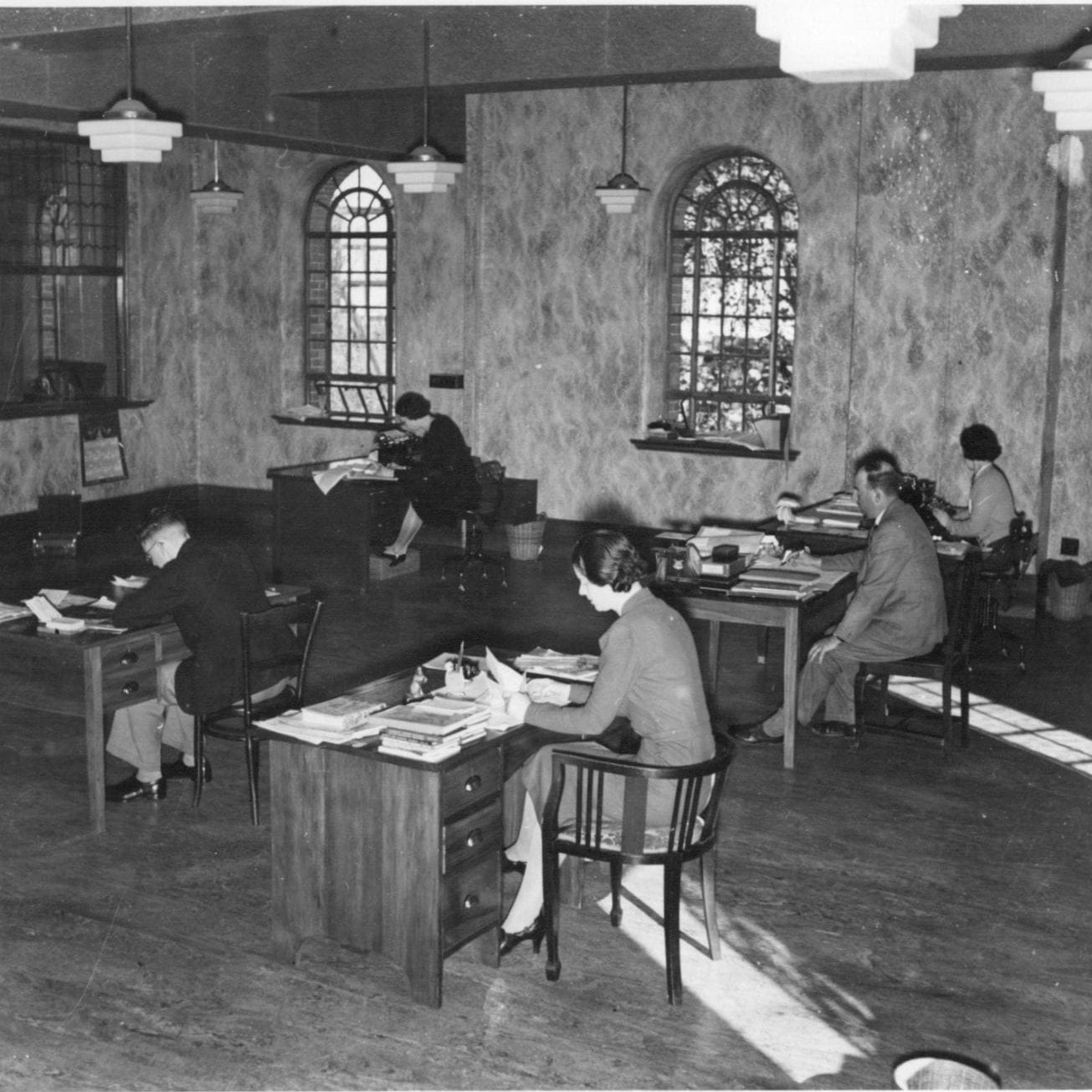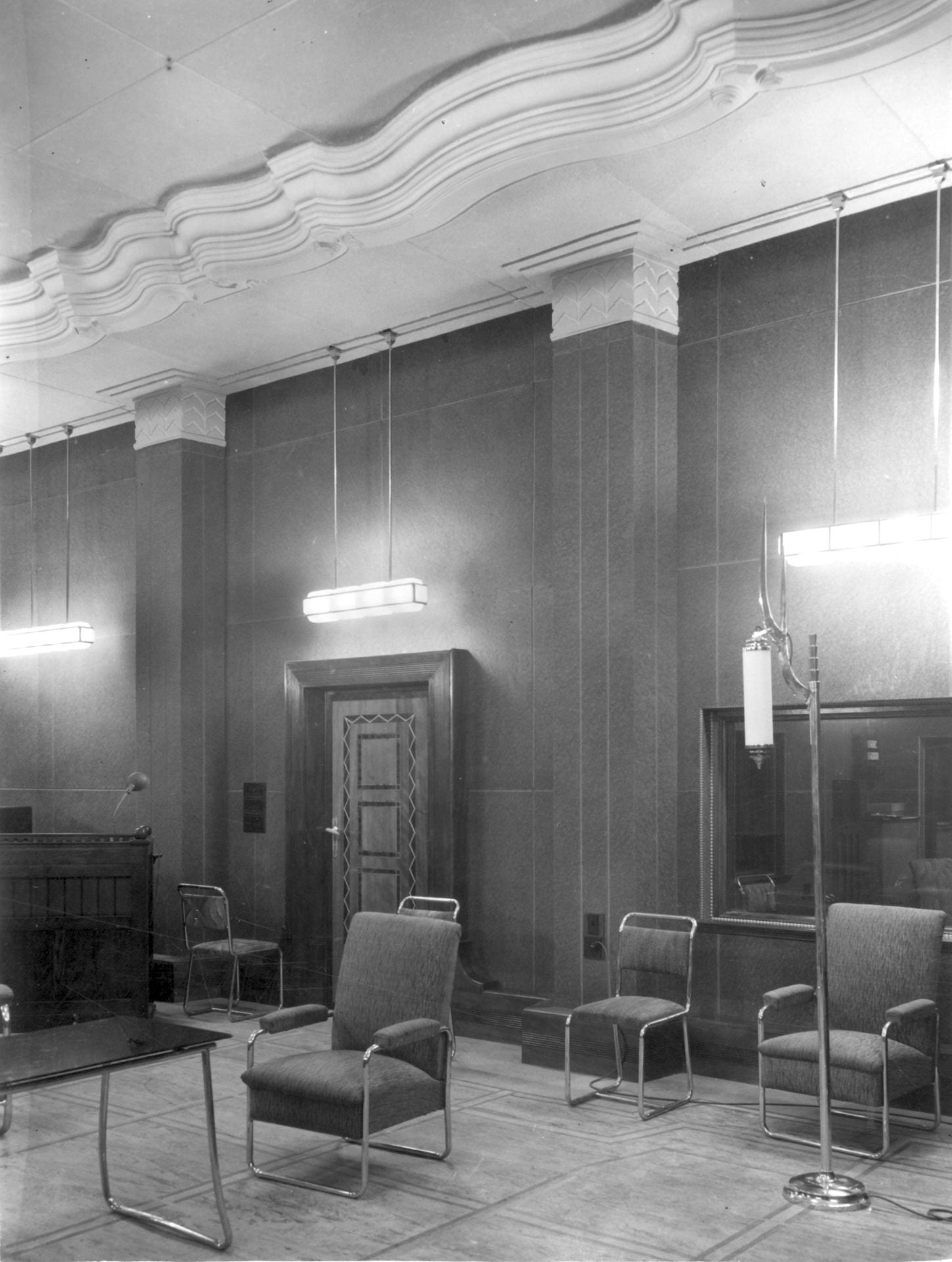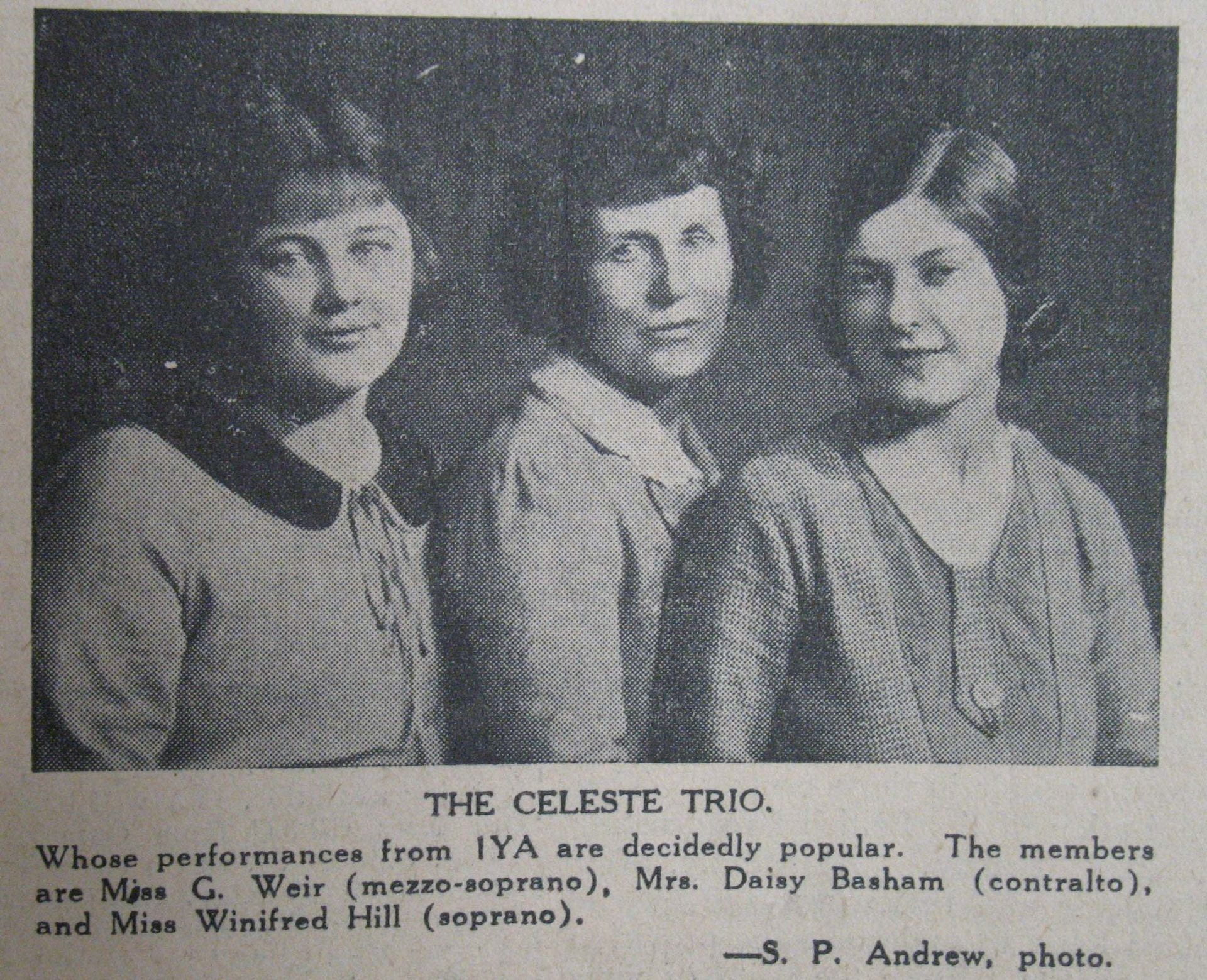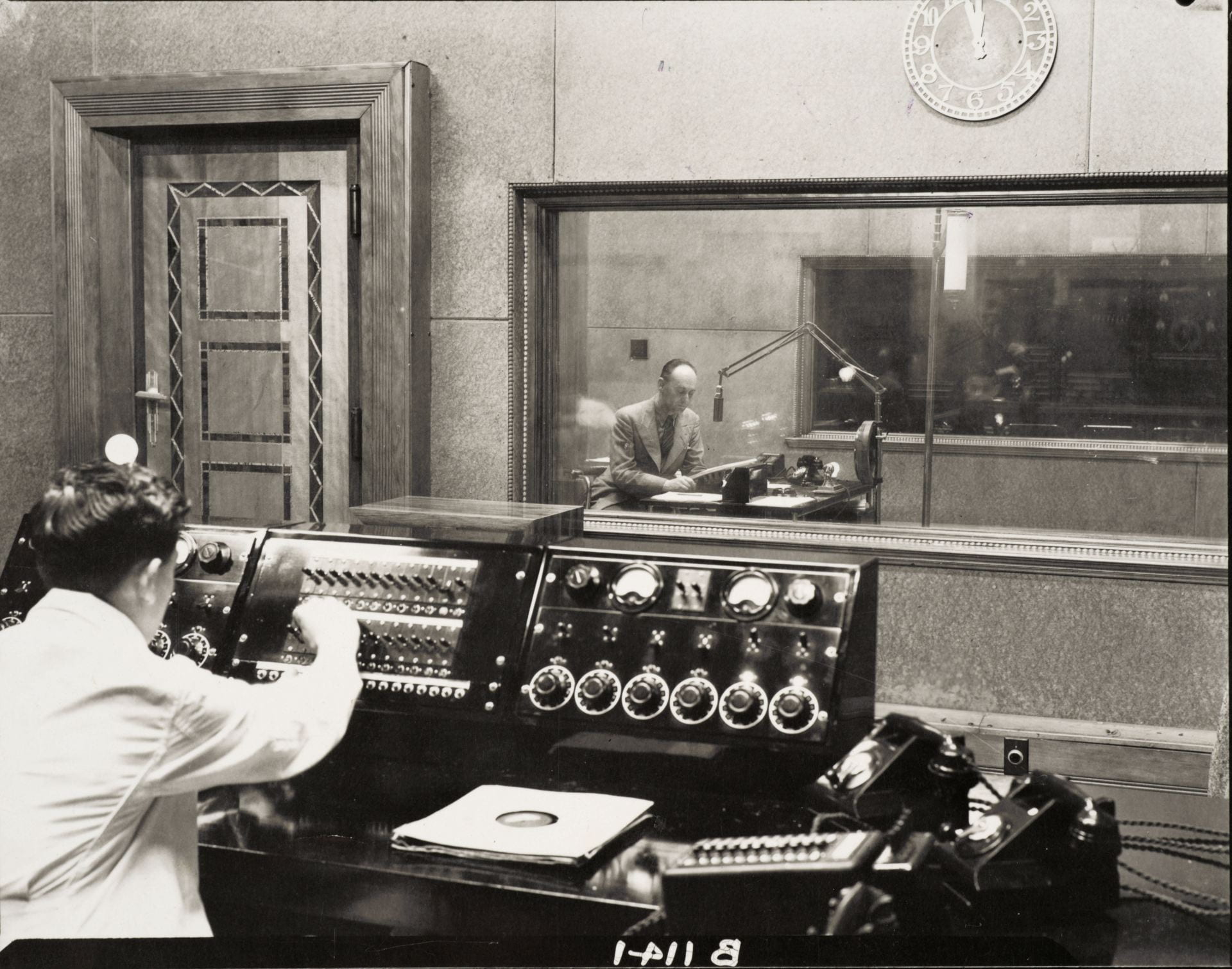The Radio Broadcasting Years
In 1935, 74 Shortland Street opened its doors as the first purpose-built radio broadcasting station in the Southern Hemisphere.
With a striking neo-Romanesque brick facade and spectacular Art Deco interior, it was dubbed a ‘magnificent broadcasting palace’ by Postmaster-General Adam Hamilton. Hamilton opened the newly constructed station on 23 January 1935, as until 1936 the Postmaster-General oversaw broadcasting as another means of communication.
The following year under a newly formed Labour Government, broadcasting shifted to being perceived as a social force. The position of Director of the National Broadcasting Service was formed, replacing the Postmaster-General in this role.
The new broadcasting station was built for Radio 1YA, a popular government-owned station which broadcasted across the Upper North Island. 1YA was one of the earliest call signs to obtain a broadcasting licence in 1923, and was initially privately owned by the Radio Broadcasting Company until the Government bought its assets in 1932.

One of the office spaces in the Broadcasting Station. Courtesy of Auckland Museum Tāmaki Paenga Hira.

A grand lobby on the fourth floor of the Broadcasting Station, where Gus Fisher Gallery is now located.
Initially, Radio 1YA had operated on France Street just off Karangahape Road in the Radio Broadcasting Company Building. The company had antenna masts on top of the Georges Court Department Store buildings. In 1935 the company’s headquarters on France Street were demolished to make way for a new warehouse for the Georges Court store (which still stands today on Mercury Lane), and Radio 1YA moved into their brand new premises at 74 Shortland Street.
The new building was constructed of native timbers including Kauri and Rimu, and built into the side of the hill which marked Auckland’s original shoreline. This offered natural sound insulation, aided by the three inch thick exterior walls and lack of windows. The building offered multiple studio spaces, including Studio One, the largest recording studio in the country at that time and famous for being able to contain an entire orchestra.
A striking feature of the building was its inlaid wooden doors, constructed from multiple native timbers and inlaid in an intricate, geometric design characteristic of the Art Deco movement. Many of these doors still exist in the building today, and can be seen around Gus Fisher Gallery’s spaces. Other features included decorative plaster moulding and columns on the walls and ceilings, geometric lamp fittings and stone terrazo floors and walls in the bathrooms (which still exist today in the building). The centrepiece was an elaborate stained glass dome, surrounded by plaster moulding originally painted in several colours ranging from lime green to terracotta. The dome still exists today, albeit surrounded by white.
1YA broadcasted a number of programmes from this building, including dramatised plays and serials, Children’s Hour, live concerts, sports, news, programming for women and religious items. A number of radio personalities passed through this station, including Maud Ruby Basham (better known as Aunt Daisy) who started out her career in radio through musical numbers before moving into announcing. Children’s Hour was a popular feature, with personalities such as ‘Uncle Tom’ broadcasting from 1YA.
Visiting the building was a privilege in these early days, with many performers and announcers recalling the immensely formal atmosphere and modernity of the studios and equipment. The station manager initially lived downstairs in the building and had a garden in a small backyard. Due to the live nature of radio, everything had to run to a very precise schedule.

Aunt Daisy in one of her early musical roles as part of ‘The Celeste Trio’.

Announcing in action from one of 1YA’s broadcasting studios, mid 1940s. Courtesy of Auckland Museum Tāmaki Paenga Hira.
As television’s introduction to Aotearoa New Zealand loomed, the broadcasting station became a site for early closed-circuit transmission tests with some of the 1YA staff getting involved. When television moved in in 1960, the radio station briefly shared the building with the new staff runnng channel AKTV-2.
1YA broadcasted from the building until 1961, when a fire broke out in the lower levels and caused significant damage to equipment. With AKTV-2 growing in presence in the building, 1YA moved into Broadcasting House in Durham Street.
With radio no longer in the building, its large, soundproof studios were refitted for its new life in television.